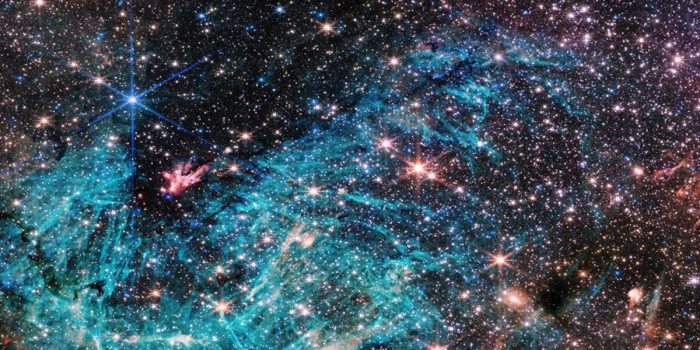NASA’s James Webb Space Telescope has recently unveiled a captivating image of the Milky Way, providing detailed insights into the central region known as Sagittarius C. Situated about 300 light years away from the galaxy’s massive black hole, this snapshot reveals approximately 500,000 stars, along with protostars emerging from dense dust and gas clouds. Protostars represent the early stages of star development, gaining mass before reaching full maturity.
What adds to the intrigue is the presence of feathery cyan wisps in the image, believed to be emissions from ionized hydrogen. These wisps, typically produced by large stars releasing excited photons, serve as a backdrop to an enigmatic discovery—needle-shaped structures scattered randomly within the ionized hydrogen. Scientists are puzzled by these structures and are eagerly seeking more data to unravel their nature and significance.
“There’s never been any infrared data on this region with the level of resolution and sensitivity we get with Webb, so we are seeing lots of features here for the first time,” said University of Virginia undergraduate student and principal investigator Samuel Crowe. “Webb reveals an incredible amount of detail, allowing us to study star formation in this sort of environment in a way that wasn’t possible previously.”

Launched in late 2021, the James Webb Space Telescope is a cutting-edge instrument designed to explore various facets of the universe. Besides capturing stunning images, its primary goals include investigating the early periods of the universe, searching for exoplanets, studying early galaxies, and delving into the intricacies of star formation.
The recent image is particularly valuable due to its unprecedented resolution and sensitivity, allowing scientists, such as University of Virginia student Samuel Crowe, to study star formation in ways not previously possible. Crowe highlights the telescope’s ability to reveal intricate details in the galactic environment.
Scientists are particularly excited about the potential insights into the formation of stars provided by this image. Rubén Fedriani, a researcher at the Instituto Astrofísica de Andalucía, emphasizes the significance of the Webb telescope’s data on the tumultuous and crowded galactic center.

The telescope’s observations offer valuable information on the extreme conditions in this region, shedding light on the formation of stars and the impact of their outflowing winds, jets, and radiation on the surrounding gas. Researchers are just beginning to tap into the wealth of data provided by the Webb telescope, anticipating further revelations about the complexities of our galaxy’s core.
“The galactic center is a crowded, tumultuous place,” said Instituto Astrofísica de Andalucía researcher and co-investigator Rubén Fedriani. “There are turbulent, magnetized gas clouds that are forming stars, which then impact the surrounding gas with their outflowing winds, jets, and radiation. Webb has provided us with a ton of data on this extreme environment, and we are just starting to dig into it.”


